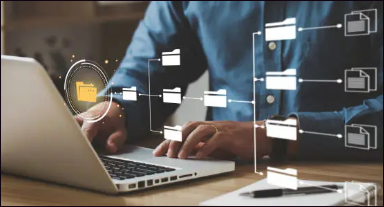Abstract
Introduction: An advanced digital transformation process was already underway, when it was impacted by the expansion of remote work during and after the COVID-19 pandemic. Objective: This paper aimed to understand how the preservation metadata related to archival digital records of Brazilian universities are being managed. Methodology: To do so, it was based both on the case study of the Federal University of Paraíba Law School and the application of research with the Brazilian Federal Universities that use the SIPAC Protocol software. A questionnaire was sent to sixteen institutions. Their responses were tabulated using Microsoft Excel software and analyzed using the Rapid Miner software. Results: A description of the stored metadata was obtained, differentiating those generated automatically from those entered manually by the user. Conclusion: We noted that these metadata, when associating their specific transactions and requirements, validate the register in production, allowing the data contained to become a manifested and accessible document over time. However, not always the described process creates an archival digital record, only to make evident and to prove the activities of a person or an institution. We also noted that the dynamic of digital resources requires the gathering of information with a reasonable level of security, allowing the computational environment in which the information was created to be reproduced over time, so the records remain accessible regardless of format and technical conditions in which they were initially created.
References
ACKER, A. Quando é um registro? Estrutura de pesquisa para localização de registros eletrônicos na infraestrutura. GILLILAND, A. J.; MCKEMISH, S.; LAU, A. J. (org.). Pesquisa no multiverso arquivístico. Tradução de Ana C. Rodrigues. Salvador: 9Bravos, 2019.
ARQUIVO NACIONAL (Brasil). Dicionário Brasileiro de Terminologia Arquivística. Rio de Janeiro: Arquivo Nacional, 2005.
CONSELHO NACIONAL DE ARQUIVOS (BRASIL). Câmara Técnica de Documentos Eletrônicos. Resolução nº. 43, de 4 de setembro de 2015. Estabelece diretrizes para a implementação de repositórios arquivísticos digitais confiáveis para o arquivamento e manutenção de documentos arquivísticos digitais em suas fases corrente, intermediária e permanente, dos órgãos e entidades integrantes do Sistema Nacional de Arquivos - SINAR. Disponível em: https://bit.ly/41OfYBf. Acesso em: 21 abr. 2023.
ENCONTRO NACIONAL DE ARQUIVISTAS DAS INSTITUIÇÕES FEDERAIS DE ENSINO SUPERIOR, 6., 2019, Goiânia. Anais. Sigla do evento: ENARQUIFES.
GIL, A. C. Como Elaborar Projetos de Pesquisa. 5ª ed. São Paulo: Atlas, 2010.
HENTTONEN, P. Privacy as an archival problem and a solution. Archival Science, v. 17, no 3, p. 285–303, 2017. ISSN: 13890166, DOI: http://dx.doi.org/10.1007/s10502-017-9277-0.
KATUU, S. Managing digital records in a global environment. The Electronic Library, [s.l.], v. 34, no 5, p. 869–894, 2016. ISSN: 02640473, DOI: 10.1108/EL-04-2015-0064.
PRODANOV, C. C.; FREITAS, E. C. Metodologia do trabalho científico: métodos e técnicas da pesquisa e do trabalho acadêmico. 2ª ed. Novo Hamburgo: Feevale, 2013. ISBN 978-85-7717-158-3. Disponível em: https://bit.ly/3oBRigz. Acesso em: 18 abr. 2023.
RIES, T. The rationale of the born-digital dossier genetique: Digital forensics and the writing process: With examples from the Thomas Kling Archive. DIGITAL SCHOLARSHIP IN THE HUMANITIES, ENGLAND, v. 33, n. 2, p. 391–424, 2018. Disponível em: https://doi.org/10.1093/llc/fqx049. Acesso em: 07 set. 2020.
ROGERS, C. Diplomatics of born digital documents - considering documentary form in a digital environment. Records Management Journal, [s.l.], v. 25, no 1, p. 6–20, 2015. ISSN: 09565698, DOI: 10.1108/RMJ-03-2014-0021.
SAYÃO, L. F. Uma outra face dos metadados: informações para a gestão da preservação digital. Encontros Bibli: Revista Eletrônica de Biblioteconomia e Ciência da Informação, [S. l.], p. 1–31, 2010. Disponível em: https://doi.org/10.5007/1518-2924.2010v15n30p1. Acesso em: 07 set. 2020.
SILVA, P. F. C. da. Diagnóstico Documental do Centro de Ciências Jurídicas da Universidade Federal da Paraíba. João Pessoa, 2018. Disponível em: https://bit.ly/3LmQq7h. Acesso em: 12 abr. 2020.
THIOLLENT, M. Metodologia da pesquisa-ação. 8. ed. São Paulo: Cortez, 1998.

This work is licensed under a Creative Commons Attribution 4.0 International License.
Copyright (c) 2024 Pedro Felipy Cunha da Silva, Wagner Junqueira de Araújo (Autor)


